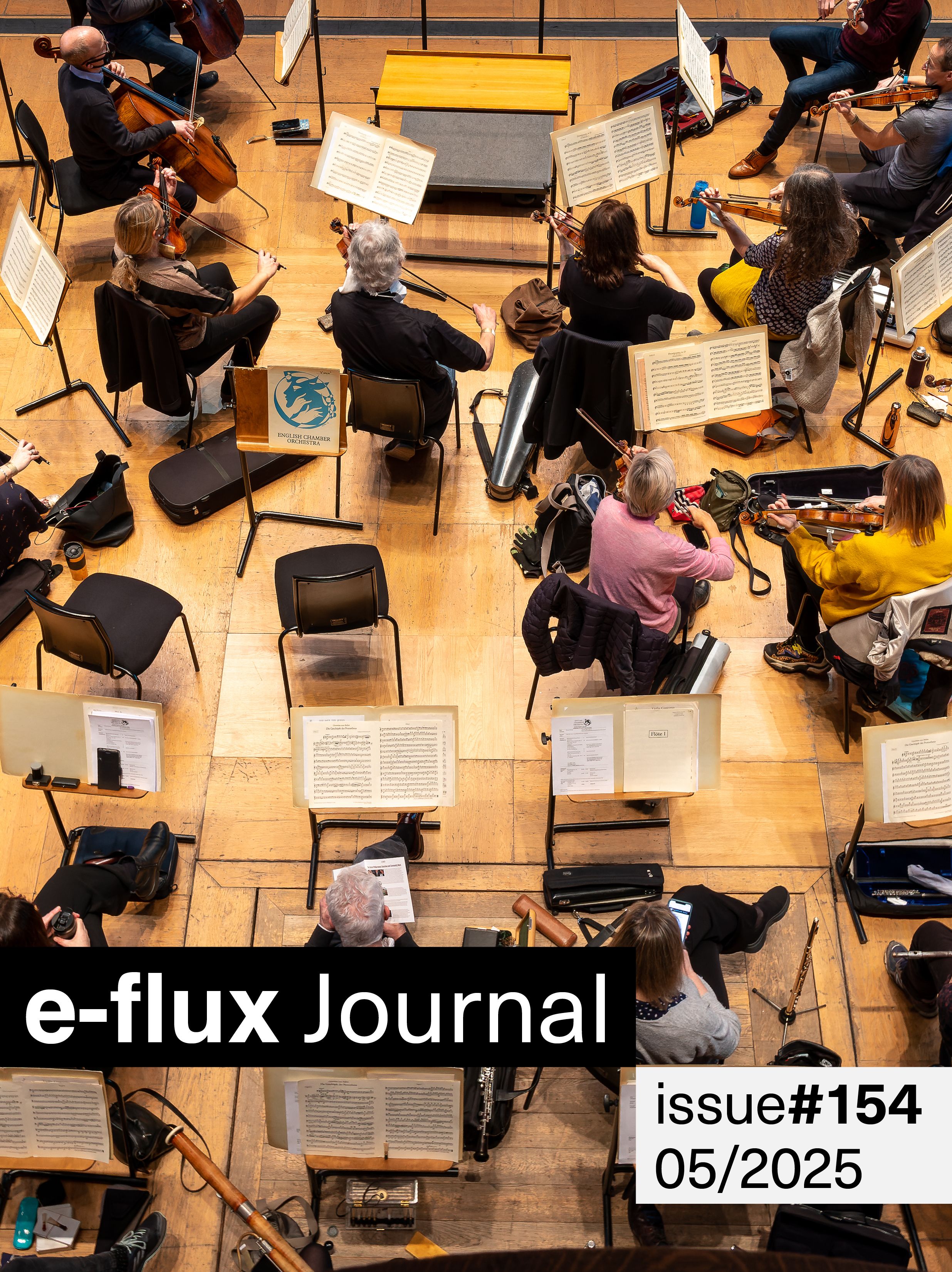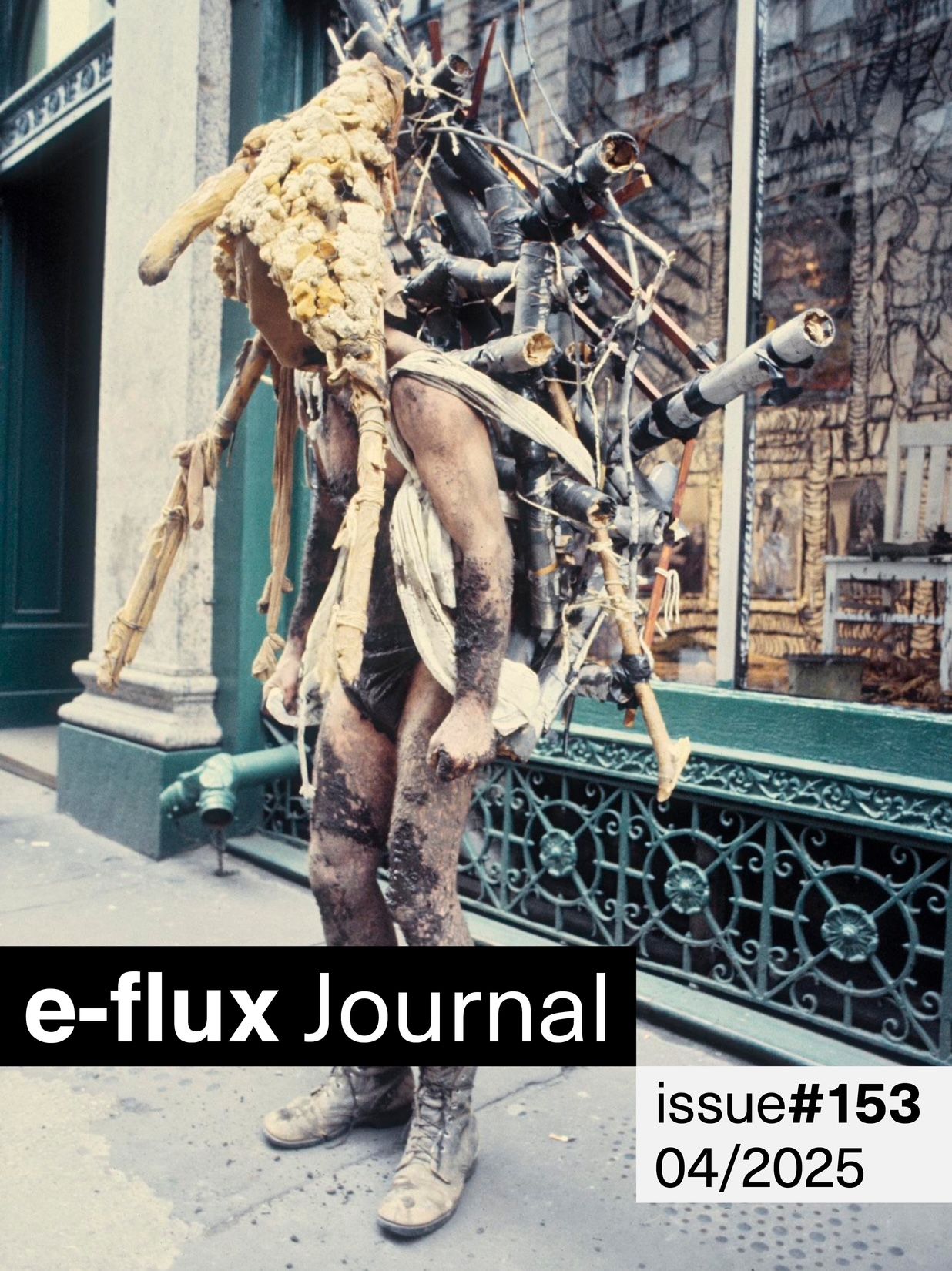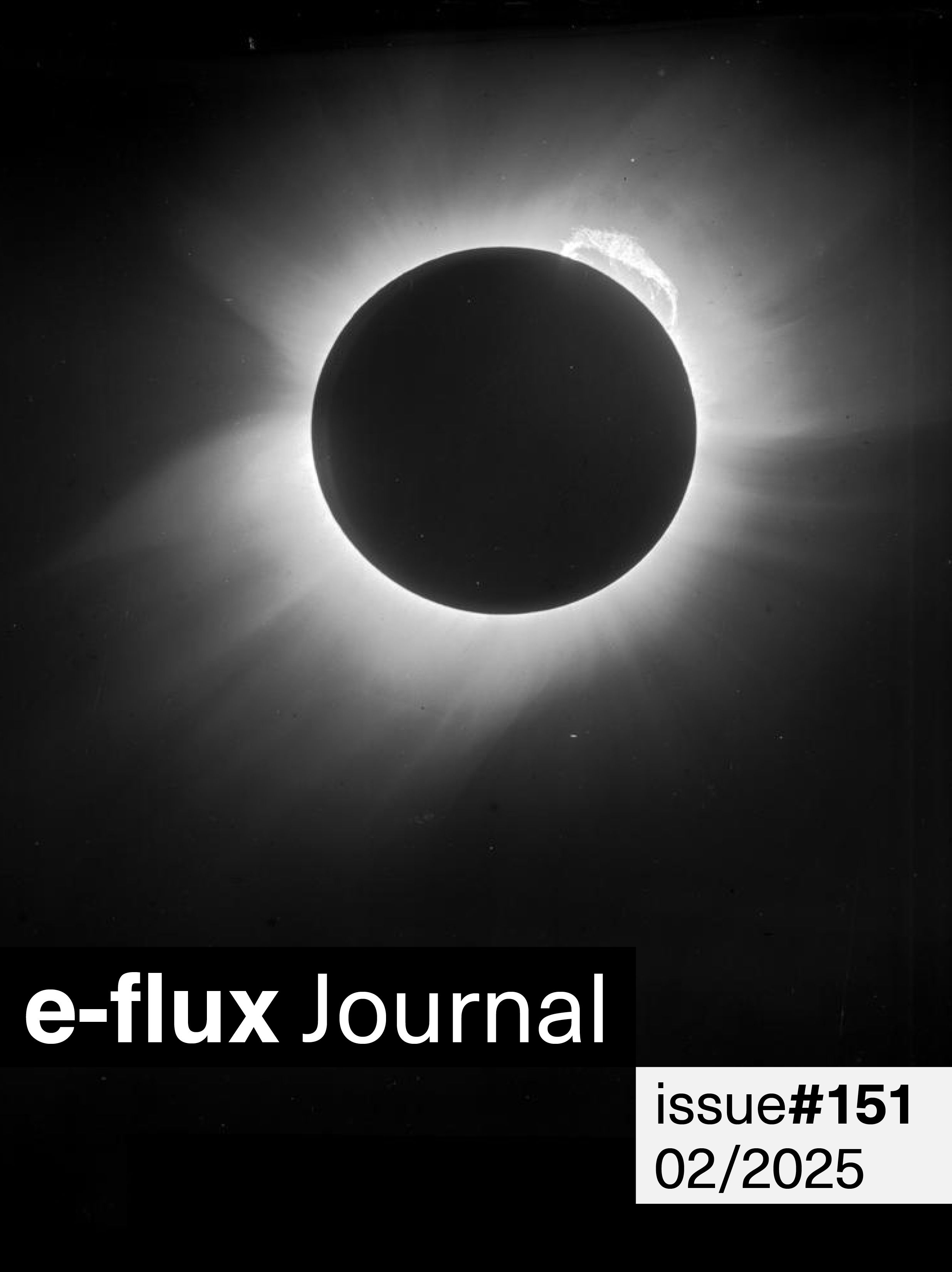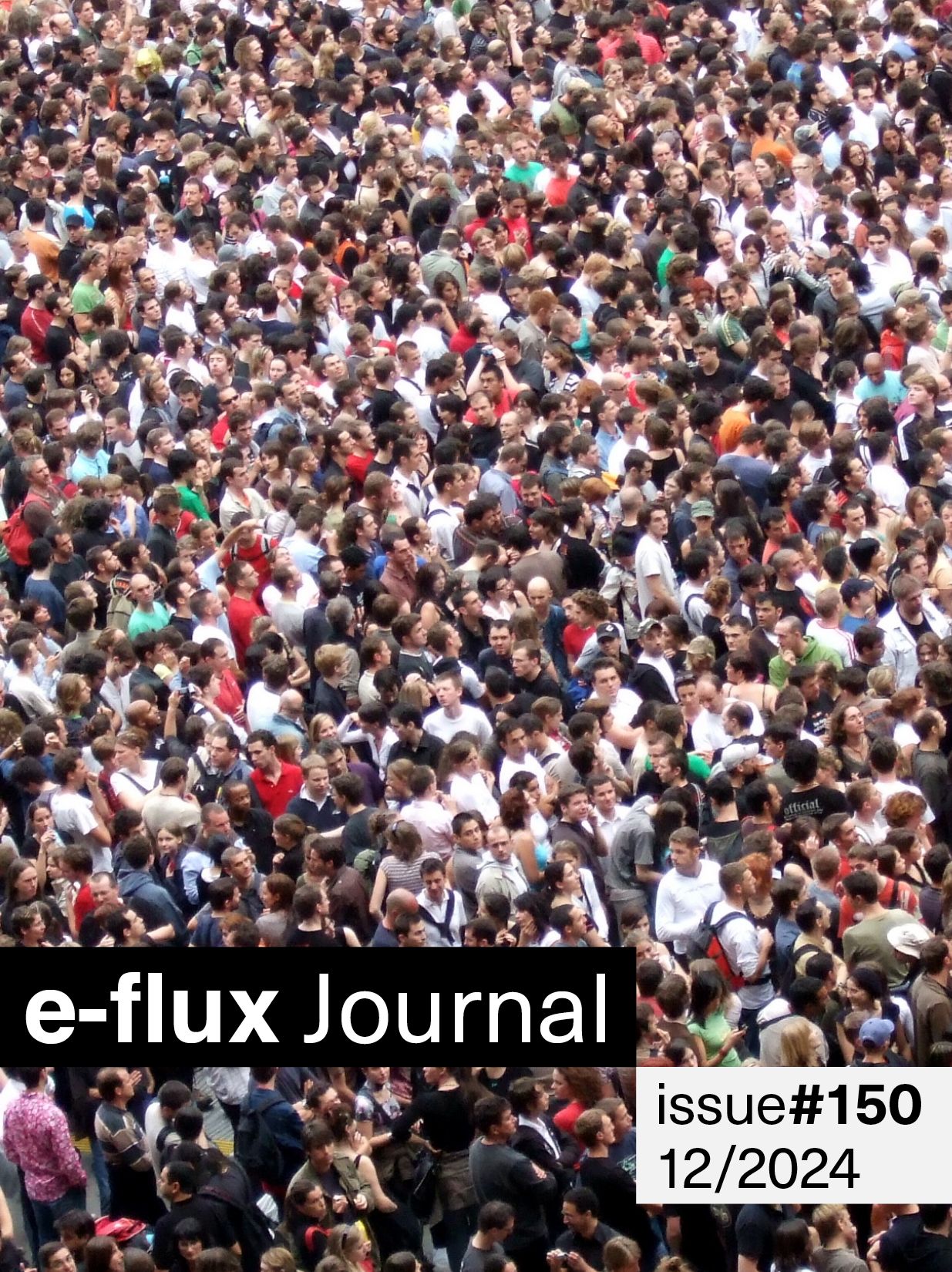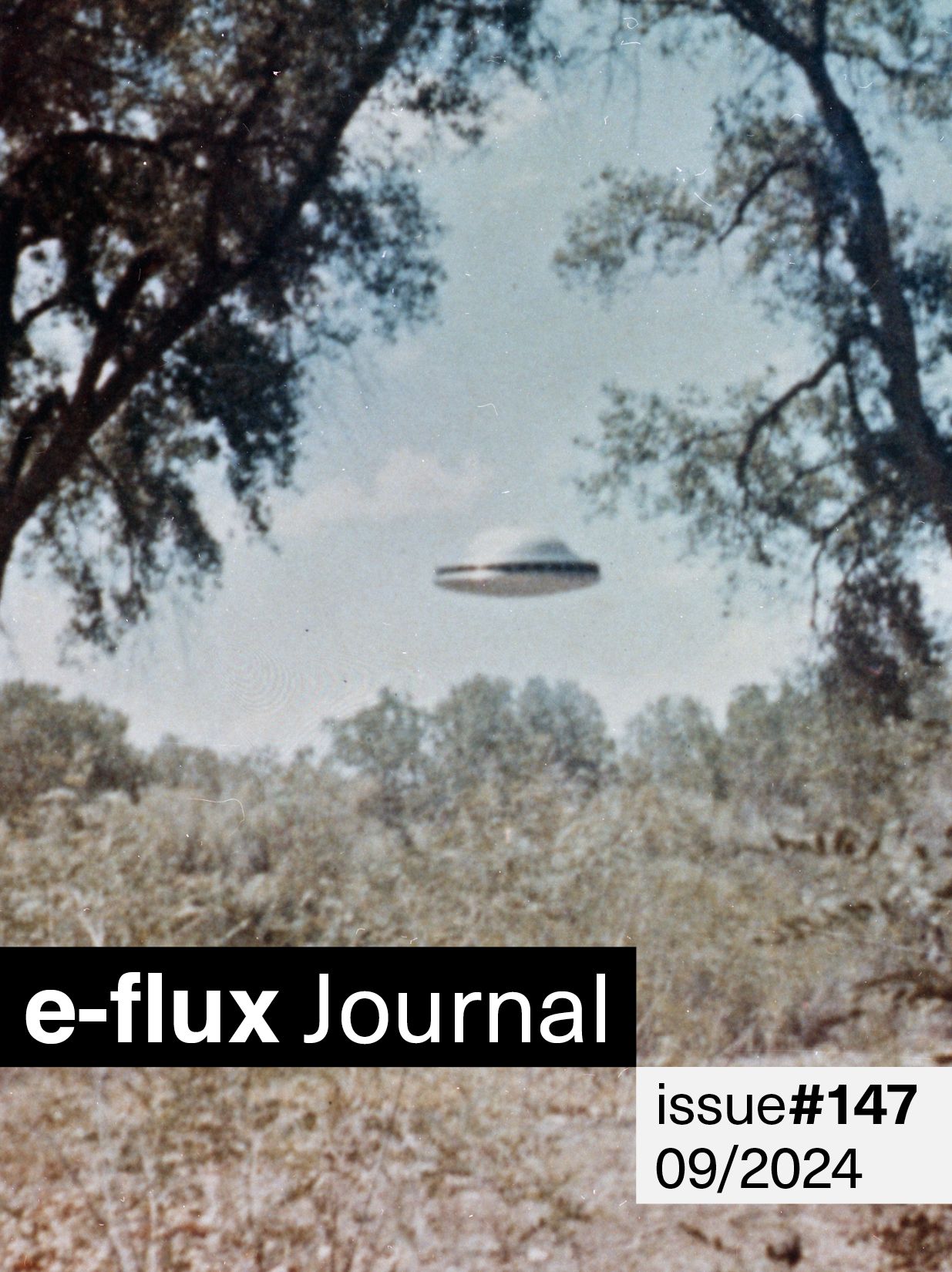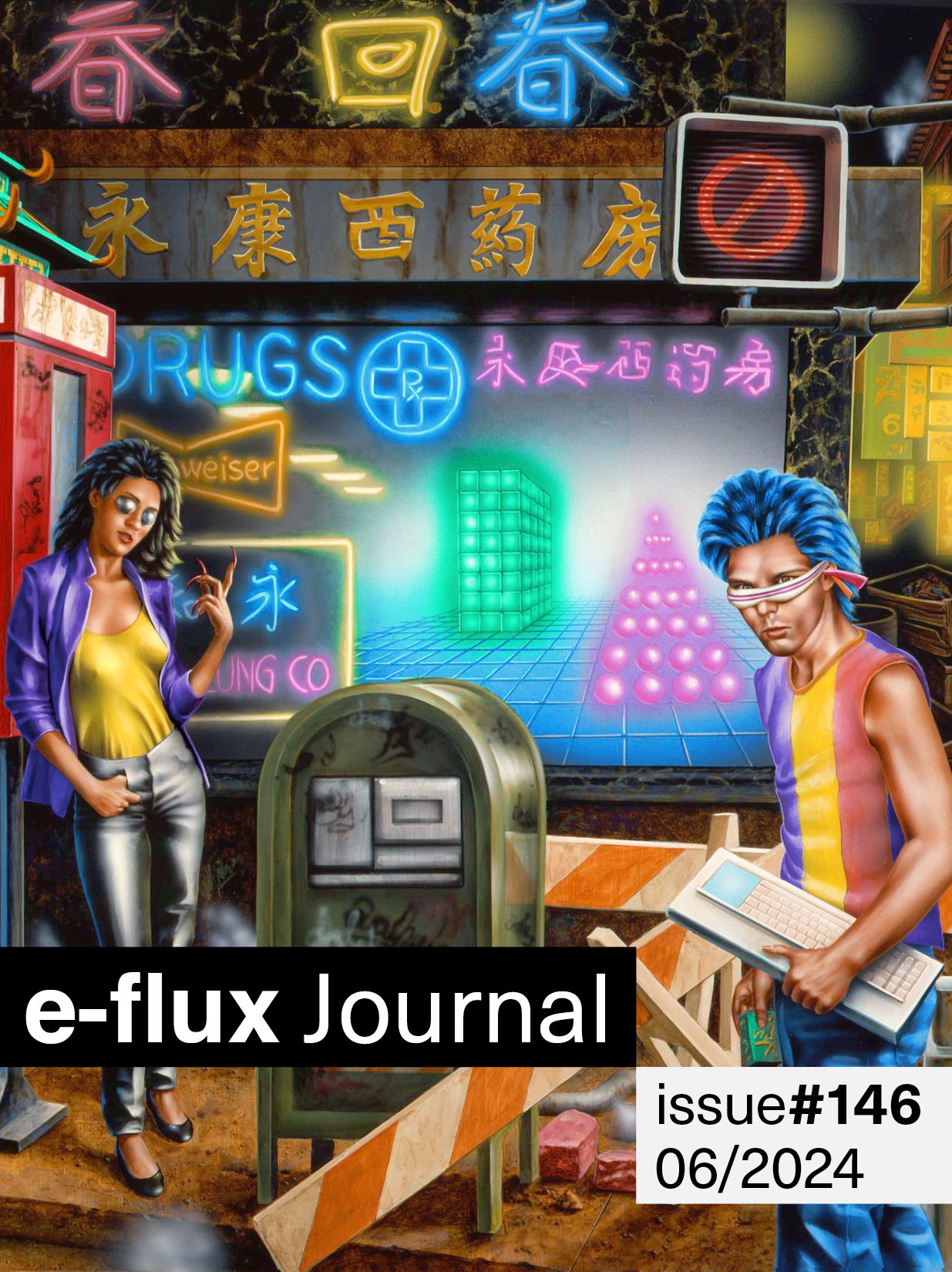e-flux journal issue 127
with Asia Bazdyrieva; Charles Mudede; Gregor Mobius; Josephine Berry; Boris Groys; Hanna Baumann, Adriana Massidda, Bassem Saad, Elizabeth Saleh, and Sophia Stamatopoulou-Robbins; Aleksei Borisionok; Mary Walling Blackburn
In this issue, Asia Bazdyrieva offers a broader picture of Ukraine’s significance as a biopolitical resource for Western European appetites. In Ukraine’s operational capacity as Europe’s “breadbasket,” a colonial imaginary unfolds that sees the country’s human, agricultural, and material resources as inert—ripe for extraction by a conqueror who can release their inexhaustible transactional benefits. Through this strategic lens, Russia’s invasion appears to be the latest in a longer line that implicates Germany, which today speculates on Ukraine’s material and territorial benefits while hoping to distance itself from the Nazis’ ruthless interest in controlling the ukrainische Kornkammer.
Also in this issue, Josephine Berry attends to the insurgent role of feeling in maintaining an affective sensorium of organismic creation. At present, interest is growing in transitioning away from creative acts grounded in imagination, sensation, and technical experimentation. As many turn toward a cold scientism of autonomous worlds inhospitable to human life—whether alien, animal, or material—we might ask about the relation between such expressions of “environmental distress.” What sensorial reciprocities—with place or each other—might be more insurgent? In a sequel to last issue’s “Personal Entropy,” Gregor Mobius shows how a visual device for representing RNA/DNA might be meaningful not only as a code, but as an image of what earth’s first life-forms saw. Seen as representations of extremely low-resolution images, what can such elementary matrices tell us about the seemingly endless variety of life that shares the same basic code, and about the human drive to find organic life beyond our own planet?
Charles Mudede looks at the recent comedy series South Side and its brilliantly dystopian near-future scenario of rentier capitalist debt-servicing and hopeless speculation. Set in Chicago’s South Side, the show can be seen as a detailed Black analysis of a postwar American legacy of economic shocks, with one weapon hidden inside its comedy of capitalist totality: the wonder of an amateur astronomer. Meanwhile, Boris Groys considers the role of ancient and modern Gnostic doctrines in warding off the tyranny of reason. According to Groys, Gnostic roots ran through the particular “wisdom” of Soviet dialectical materialism. This allowed Soviet Marxism to integrate mysticism and philosophy in ways that were revolutionary to 1970s–80s philosophy, and still seem surprising and contradictory today.
A roundtable discussion between Hanna Baumann, Adriana Massidda, Bassem Saad, Elizabeth Saleh, and Sophia Stamatopoulou-Robbins probes the relations between art and toxic waste. Two films anchor the conversation. In one, a speculative Palestinean future is carved out from under a West Bank landfill. The other, which also faces the future, shows a coastal dump northeast of Beirut. At that site, noxious refuse and its corrupt management spill into the sea. The filmmakers ask how, in a shattered present, we can make sense of toxicity’s many visible and buried temporalities—as well as its entwined nonhuman/human byproducts.
In Belarus, Aleksei Borisionok travels queer timelines through three post-Soviet museums—a journey marked by deep geological time, flashy (fashy) decay, raves, and fintech. Borisionok discovers how the museums played a role in anti-fascist protest movements of the the past two years (and the past century). There’s a very different museum, in North America, that was near-impossible to enter even when “open.” With an essay in this issue that’s been years in the making, Mary Walling Blackburn draws a lumpen line through Fred Sandback’s eponymous museum. The Massachusetts town that once hosted it contains open and suppressed realities of space, form, race, and class. Walling Blackburn shows some of them through a linear(ish) narrative from 1847 to 2017. One thread has to do with the backs of nineteenth-century workers in the manufacturing town’s mills. Another shows strata of local twentieth-century bravery and hate. A further line: the long, dampening, and chilling effect that a 1970s-era sweater had on telling a true, complex, classed art-world history.
—Editors
Asia Bazdyrieva—No Milk, No Love
Ukraine has been rendered a territory through dual colonization by Western Europe and the Russian Empire, a position that was further reinforced during the Soviet era. The complex colonial gaze that Ukraine has been subject to has at least two material aspects: First, the process of “resourcification” that sees Ukraine—its territory, natural resources, and people—as an operational space, merely a site for material transaction. And second, the way this view manifests itself when the territory is deemed exhausted of its resources, no longer of use—or is placed under existential threat, such as the one Ukraine faces today.
Charles Mudede—The New Black Politics of the Cosmic
Of course, “Litcoin” crashes and everyone in South Side is left with nothing. Odom, the amateur astronomer, is depressed by the lost opportunity to purchase a powerful telescope. A rare comet is making its way around the solar system and he wants to see it. But he is broke again. At this point, the show makes a leap into the cosmic. All along, and all around the South Side, they have been surrounded by the cosmic. It can only be accessed by a form of wonder (thaumazein) that Hannah Arendt described in her book The Promise of Politics.
Gregor Mobius—Alien Life as an Observer
It may be that the process we call evolution, which led to more complex life-forms on earth, was not meant to improve chances for survival, but to acquire a higher-definition picture of the world, moving from lower-resolution (two pixels) toward much higher-resolution images. Thus, improving chances of survival was only a secondary goal—a necessary means for life’s need to see itself and the world around it in the best, clearest, sharpest possible way.
Josephine Berry—The Agency of (Planetary) Feeling
In his 1934 book Art as Experience, John Dewey understood the organism’s continuous negotiation with its environment in a related way. Sensuous experience, for the American pragmatist philosopher, is essential in the lessening of discomfort or the increase of well-being. It is integral to the aesthetic experience common to all life—an experience which gives rise to expressive forms and can be understood as the organismic precondition of art. Put another way, for Dewey, art is an artificial separation of the aesthetic sensibilities that suffuse and structure the experience of life-forms in the living world.
Boris Groys—Elements of Gnosticism in Dialectical Materialism (Soviet Marxism)
Beginning in the late 1970s and early 1980s, the term “wisdom” appeared very frequently in Soviet philosophy publications. It was used to better situate the doctrine of dialectical materialism within the history of philosophy as well as in relation to science, art, religion, and so on. Dialectical materialism was itself conceived as a form of “wisdom”: that is, as an insight into the whole of the world which was fundamentally lacking in science and art.
Hanna Baumann, Adriana Massidda, Bassem Saad, Elizabeth Saleh, and Sophia Stamatopoulou-Robbins—Film and the Toxic Politics of Waste: A Roundtable
I think that living on top of a landfill is a very likely future. In fact, I would go so far as to say that in Beirut, we are already dwelling within a rubbish dump! In the film, constellations are mapped out on the back of a human body. Tattooed arrows representing reuse, recycle, and repair are portrayed like celestial movements of material that follow the tracks of industrial closed-loop circuits. A needle traces the constellation on the skin, which seems to add a violent component, as well as an element of risk and perhaps even a kink to this map-making practice. How do violence and risk frame the new social contract you envisage?
Aleksei Borisionok—Queer Temporalities and Protest Infrastructures in Belarus, 2020–22: A Brief Museum Guide
The weekend after the terrible 2020 elections, protesters gathered in front of the museum. Stella, the monument to victory, was wrapped in a huge white-red-white protest flag. In the following days, the museum was suddenly transformed into a site that the state had to “protect,” by any means, from its people. Military forces descended on the museum every Sunday during the autumn of 2020. Already made rugged from gestures of political subversion and unrest, the space was then surrounded by barbed wire and militarized police forces. This policed border separated the history of anti-fascist movements displayed inside the museum from a contemporary instance of the same struggle.
Mary Walling Blackburn—A Lumpen Line Through the Fred Sandback Museum
People are around me in the hallway again, having returned from the Goldsworthy located beside the house. They say he threw a fit during install and threw his chainsaw. It is art world gossip, but it also shakes up the Texas Chainsaw Massacre trope—a white man with an unleashed chainsaw, the chain actively rotating across the blade while hurtling through the air, is simply an agitated English sculptor who is more renowned for gently arranging dew and dust.


